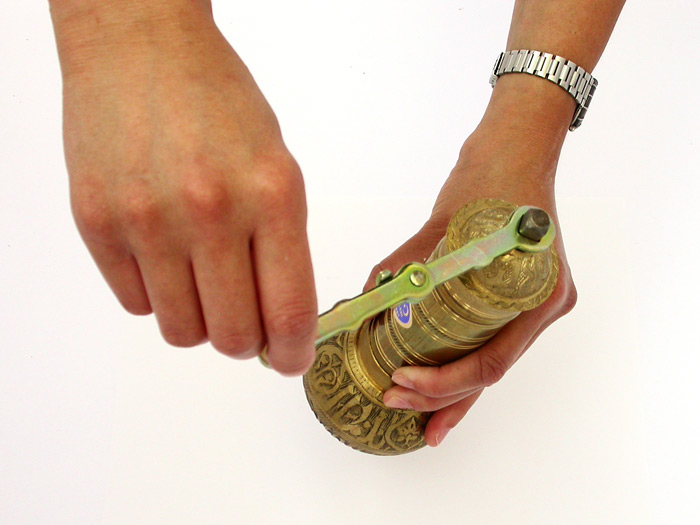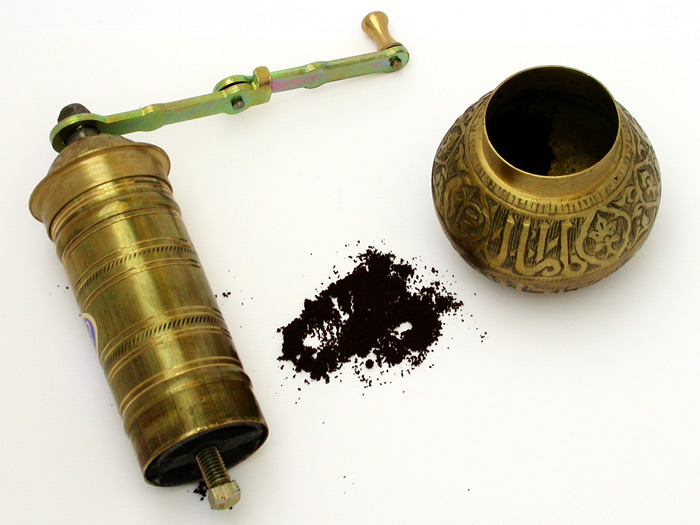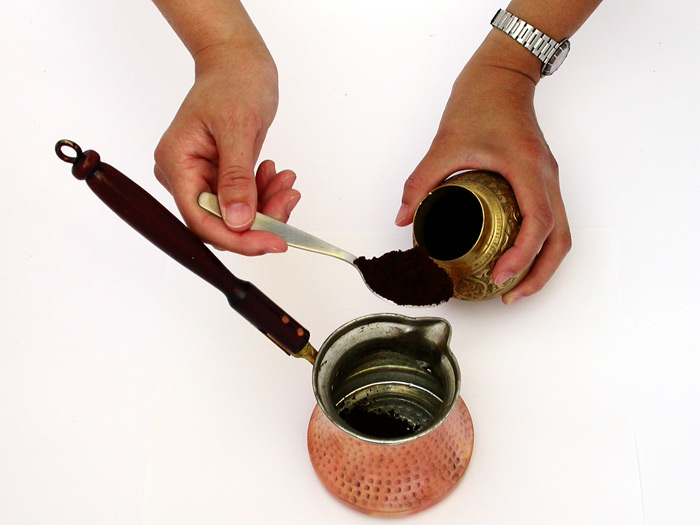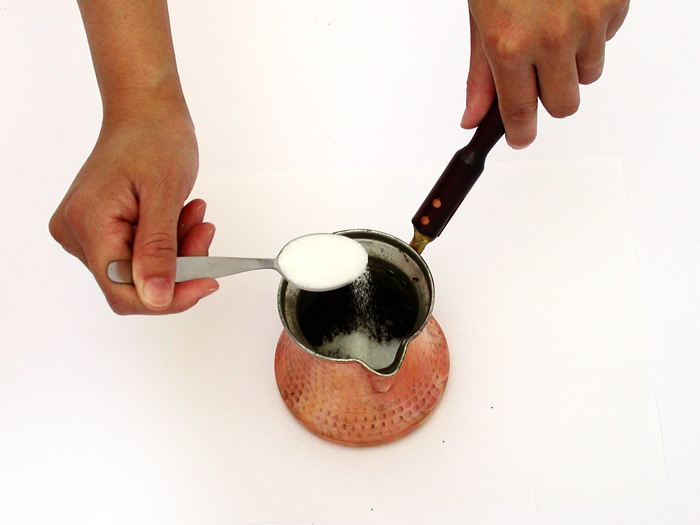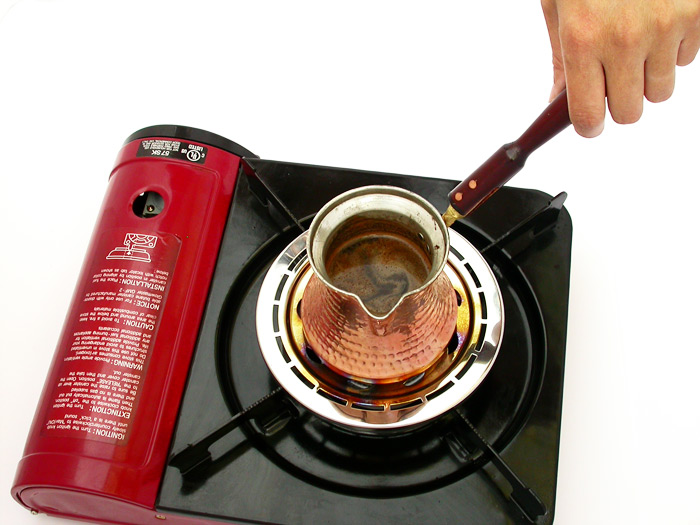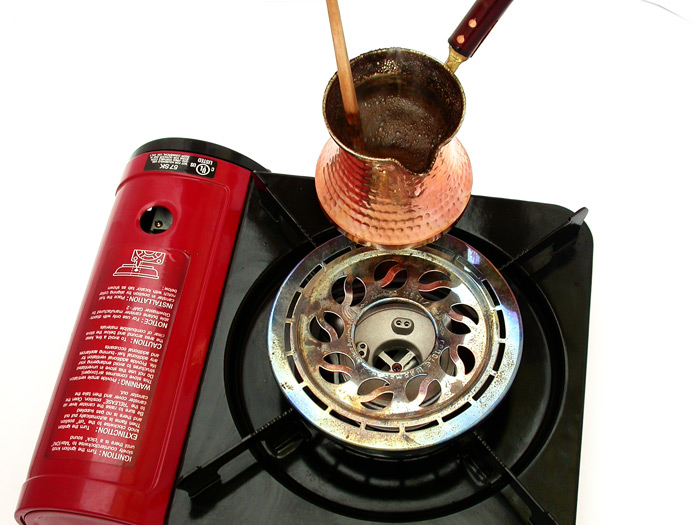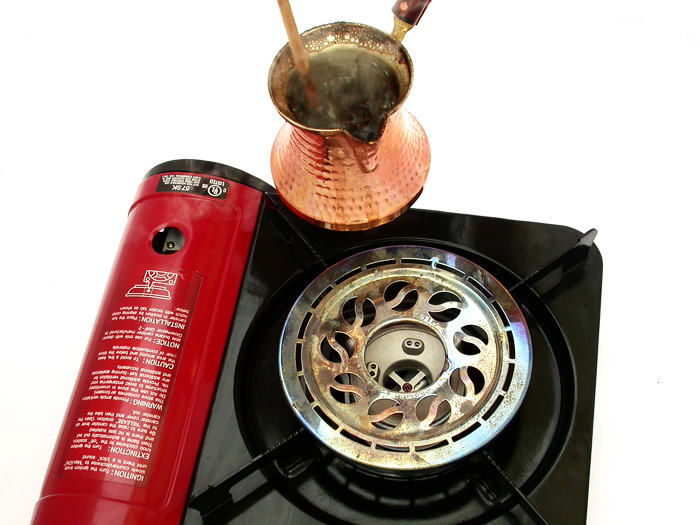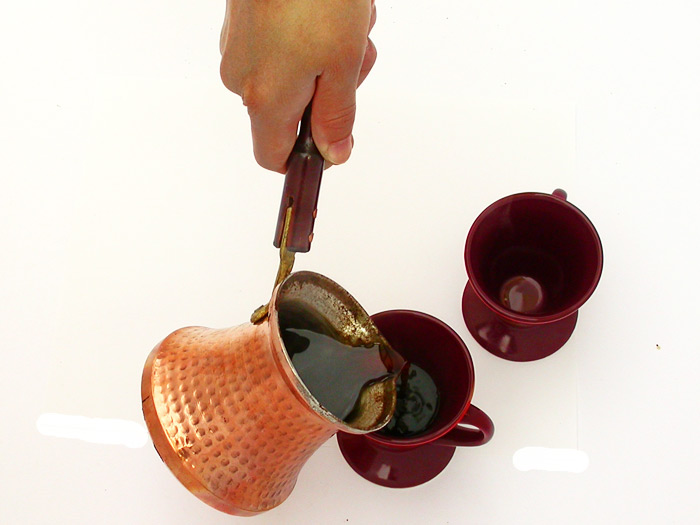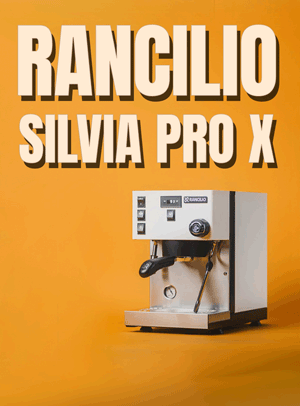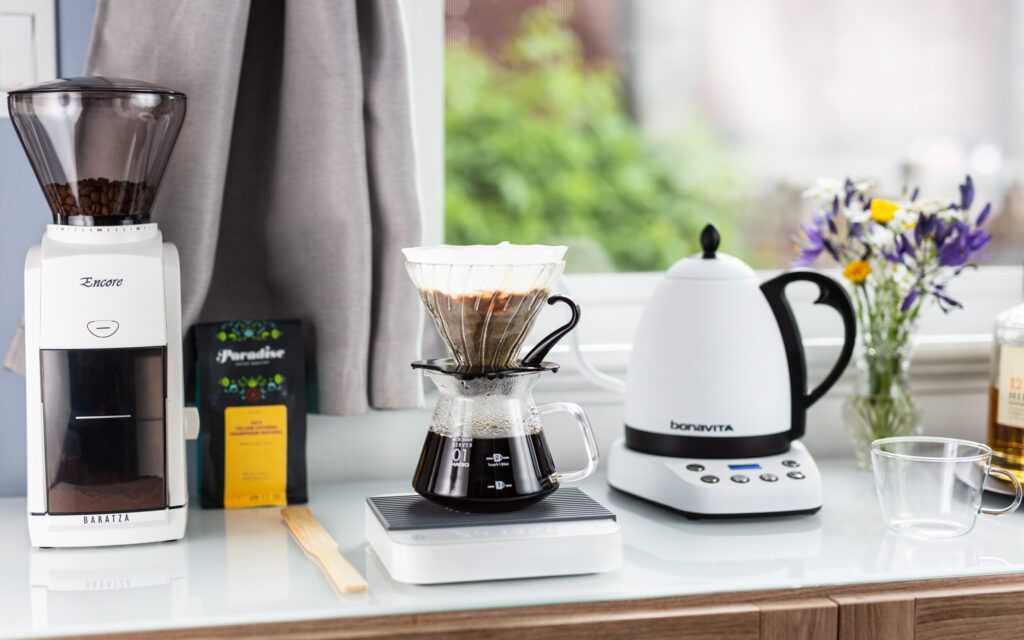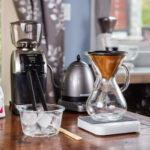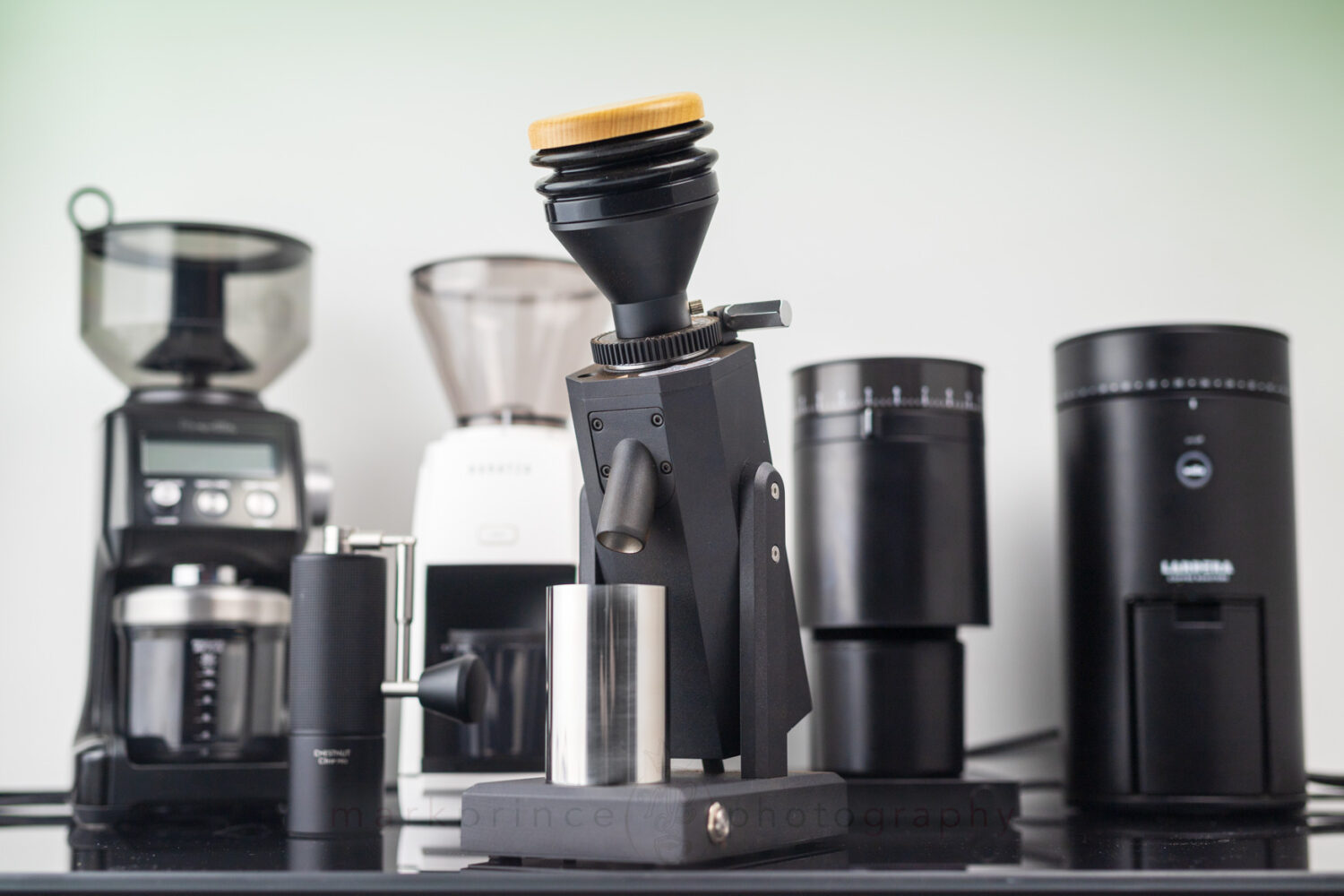Turkish Coffee
Now before we get into this further, check out two tutorials and references to Turkish coffee – Wikipedia has a great one, and the Turkey Travel Planner has a good and brief how to as well. And in our tutorial below, you’ll note that in this demonstration, we’re stirring at the third and final removal of the ibrik – this is because it delivers a cleaner finished cup. Many purists however would never stir the ibrik while it’s brewing, in order to preserve the foam, and ensure each cup gets a bit of foam. It’s your choice as to how you want to do it – experiment!

Time Needed: 5 minutes
Equipment Cost $ 110
Necessary Supplies
Necessary Tools
Turkish Coffee Steps
The Main Parts
You don’t need much to brew Turkish coffee – a coffee grinder (we’re using an authentic Turkish coffee mill in this demonstration), the ibrik, some demitasse cups, and if desired, sugar or spices. If using cardamom (very authentic!) try getting whole seeds and crush them extra fine, and use sparingly.
A Real Turkish Mill
Specialized brass mills are found almost anywhere (try Greek or Turkish food stores), and while very slow to grind, do an exceptionally fine grind.
The good news is, modern mills like the Timemore and Knock series can also grind fine enough for turkish coffee.
Coffee Powder
Turkish coffee requires an extremely fine grind – finer than espresso – or almost as fine as baby powder. The finer the better. You’re getting down to 200 microns or smaller – almost like talcum powder.
Measuring the Coffee
Normally we add cold fresh water first – use your demitasse cups to measure in your amounts (we didn’t in this pic). Then add one heaping teaspoon of coffee per demitasse of water. Adjust to your own taste after brewing a few times.
The "Sweet as Love" Part
Sugar is a frequent additive to turkish coffee. Adjust to taste, but typically I add 1 teaspoon for every two teaspoons of coffee. Also very crucial – stir the slurry of cold water, coffee and sugar before you start brewing, until the sugar is disolved.
Getting Started
Once your sugar is completely dissolved, start brewing over a medium-low heat. Too high a heat will damage the coffee. Do nothing at this point (no more stirring) but watch carefully.
First Boil
As soon as the mixture starts to boil, it will froth up, and froth up FAST. Before the froth flows over the top, remove the ibrik from the heat and let the froth settle down.
Second Boil
Let the froth build up again (remember, it will build fast once it starts), and remove from the heat again, to let it settle down.
Third Boil
Optionally, on the third boil, you can stop the brewing at this point and serve (do not stir). In this variation though, we stirred the slurry after removing the pot from the stove on the third boil. This settles down the grinds in the foam.
Optional Fourth Boil
This one is totally optional – in fact, three boil ups are best. But for a cleaner cup, let it boil and froth up one more time, and remove from heat (in this case, we weren’t stirring again, but left the stirrer in the pot).
Turkish CoffeeAdditional Comments
This How To is, in a sense, deprecated now on CoffeeGeek, but we are leaving it online until we completely rewrite this guide to our 2020s standard. We hope it does provide you guidance on making this brew method, and we look forward to presenting you a new and much more detailed How To in the future.
In the meantime, check out Alternative Brewing’s How To on the method.

Time to Enjoy some Turkish Coffee

Support CoffeeGeek
If you enjoy and learn from this resource, please consider making a one time or recurring donation to help support our work and fund purchases for future reviews.






